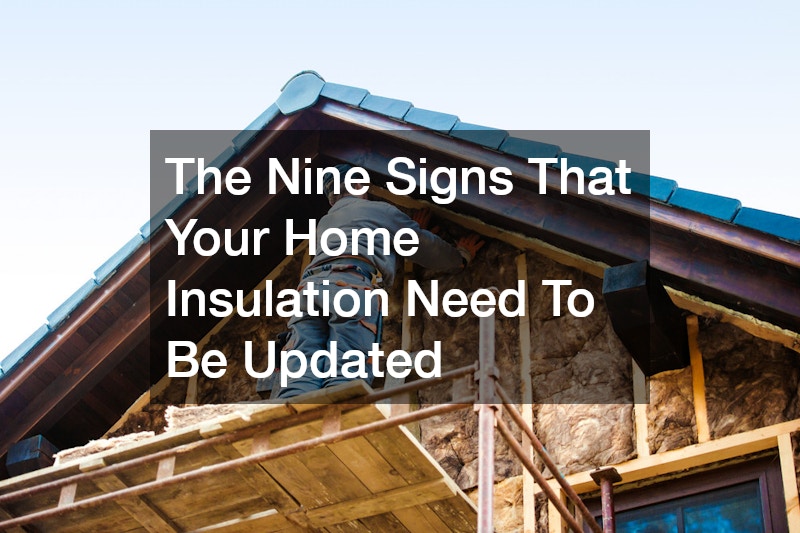

When you’re a homeowner, one of your responsibilities will be to make sure the temperature in your home stays comfortable. One of the best ways to make sure of your home’s temperature is to make sure it is adequately insulated. Our experience has shown that when you experience drafts or your temperature unpredictably fluctuates, it’s a good idea to contact an HVAC inspector. HVAC inspectors are home energy professionals who are trained to check your home for adequate insulation, including your attic and crawl space insulation.
At the end of your visit with the HVAC technician, they will let you know if you need insulation service or if you should change the types of insulation you need. Ask the HVAC contractor if their company offers an insulation package. Some contractors will provide insulation replenishment as a complementary service during their annual HVAC inspection.
During an HVAC inspection, the professionals may discover that your uninsulated spaces are wide and that you might benefit from using bulk insulation. If you have an older home, you may want to switch from old insulation types. According to InsulationCo., older insulation is more likely to deteriorate, which could lead to a fire or health risk.

Many homes in America suffer from insufficient insulation. This issue can not only leave you uncomfortable, but it can cause your energy bills to skyrocket in extreme temperatures. To prevent your heating and air conditioning from going out the window, here are a few signs that you should invest in better home insulation.
Nine Signs Your Home Is Poorly Insulated
- Unstable Temperatures. Your home should always have an even temperature; however, if you’re finding that some rooms are colder in winter or hotter during the summer, it could be a problem with your home insulation.
- High Energy Costs. Take a look at your energy bills and check for any fluctuations and increases. During more extreme temperatures it’s common to see a slight rise, but if it is skyrocketing, it could be a sign that your unit is working harder to heat or cool areas with poor insulation. More often than not, check your attic space for any drafts or signs of weakness. The blown in insulation that is standing up there may have settled and become less effective, especially if you’re in an older home.
- Cold To The Touch. Touch tests are great for determining if your home insulation is effectively keeping your energy in. If it’s working, your walls should feel fry and warm; however, if there is a lack of insulation they could feel cold or damp to the touch.
- Cold Areas. Have you noticed a room or space that is inexplicably colder or warmer than all the others? Rooms with fluctuations like this are often located directly below the attic or above the garage. This can lead to poorer insulaiton and more tempurature variation than in other rooms.
- Drafts. If you notice cold drafts in your home during the winter, it could be caused by air seeping in though the doorways and windows. Adding additional insulation in these areas can help prevent energy loss and these uncomfortable drafts. Typically an application of spray foam insulation is sufficient to seal these areas without much invasive work.
- Pests. No one wants bugs and rodents in their homes; however, poor home insulation could mean more of them sneaking in! Small cracks or opening give them all the invitation they need to creep in and create a new home in yours. If these critters can get in, your energy can most definitely get out. Help prevent all of this by checking for insulation weak spots, or have a professional perform an energy audit.
- Water In The Attic. Poor insulation also has the tendency to let water get into places where it shouldn’t be. If you’re finding wet spots or leaks in your attic, it’s time to get your insulation replaced as soon as possible. Visit http://www.cleanqueendenver.com. If left unrepaired, water can go on to cause serious issues including weakened wood structures, rot, and mold.
- Ice Dams. One of the lesser-known signs can be found on your roof during winter. Ice dams are formed when heat escapes from your roof and melts the snow that’s accumulated on your roof, this water then runs down to the gutters where it re-freezes and creates huge icicles and chunks. This can not only cause damage to your gutters, but it can be a safety hazard when the ice weakens and falls.
- Frozen Pipes. Good home insulation prevents pipes from freezing; however, if your home is prone to frozen pipes, it could be a sign that you need better coverage. If left unrepaired, these pipes can burst and cost you more than you bargained for with water damage.
Home insulation is important, and if you don’t have enough it can be uncomfortable and costly. If you’ve noticed any of these signs, call out a professional today to see what your options are for making your home more energy friendly.
